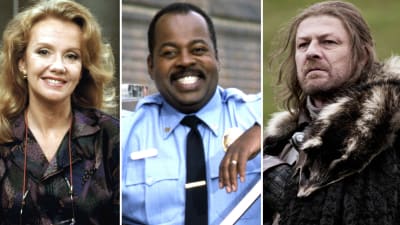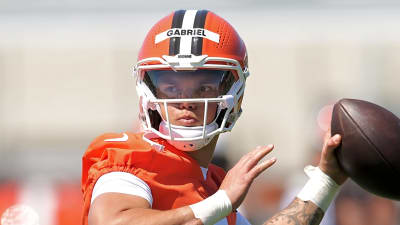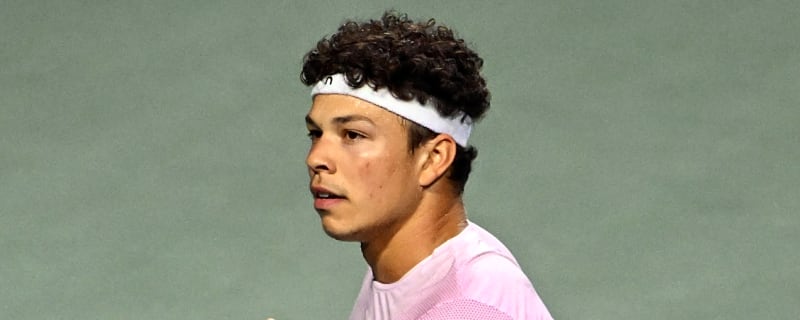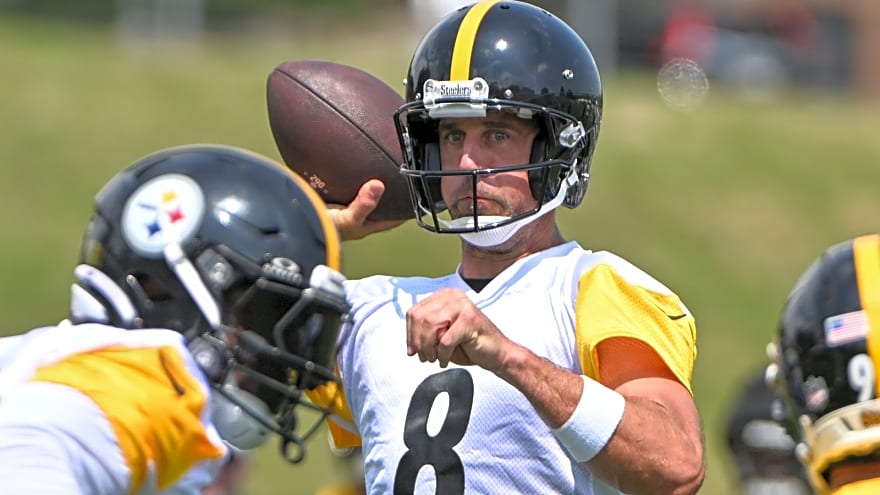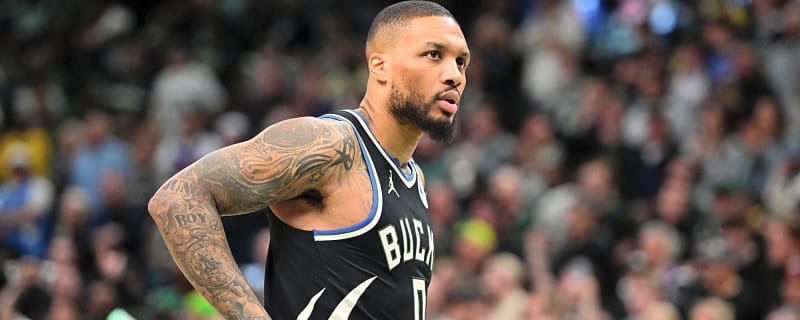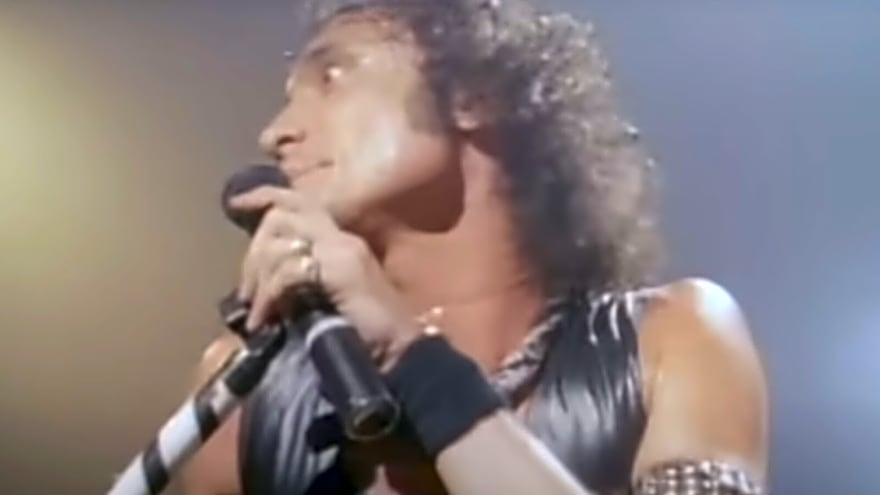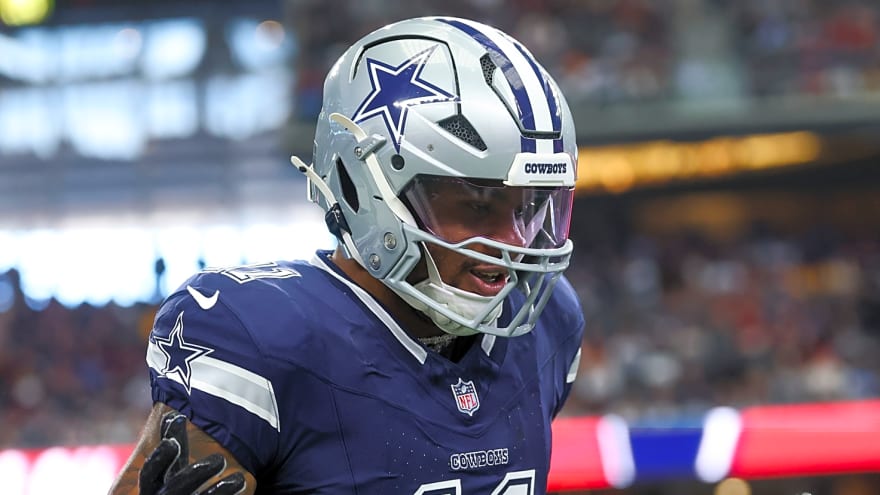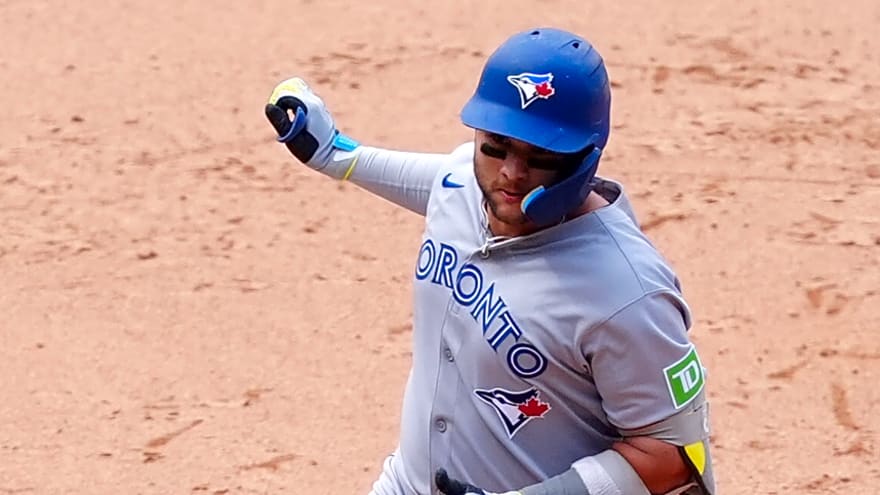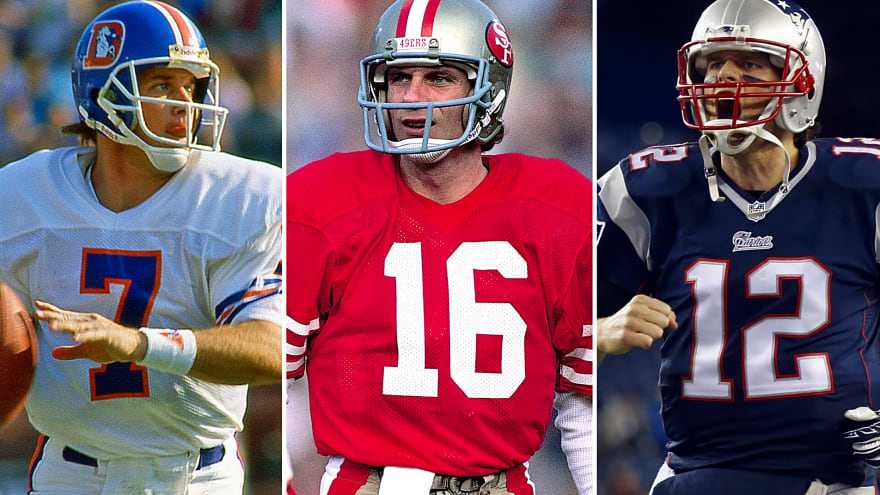
The Penguins are on the verge of falling out of the playoffs again, something that rarely happens for this team, and the coach is now clearly feeling the heat.
Mike Sullivan is one of the most successful coaches in NHL history, as he has led this current Pittsburgh Penguins dynasty for years, but after the team sold at the trade deadline, it's clear that the remainder of this season isn't going to be much fun.
Those struggles that led to the team selling are now clearly weighing on Sullivan, as The Athletic's Josh Yohe outlined the frustrations and how much the losing has weighed on the veteran coach in 2024/25.
"This season is starting to take a toll on Sullivan. You can feel it. This is a deeply competitive coach whose passion for winning is very much a signature part of his personality.He ranges anywhere from sounding resigned to angry following losses these days.
These are dark days for his Penguins and I don't see things getting much better during the rest of this season."
Unfortunately, with the most amount of picks over the next three drafts in the NHL, the team are now clearly building for the future, and with a competitive coach like Sullivan, one has to wonder if his time in Pittsburgh may be coming to an end.
Sullivan's frustrations were clear when Alex Nedeljkovic called out the lack of passion on the bench against Vegas, and when the Head Coach was asked about the lack of excitement and energy on the Pens bench, he kept it simple.
I'm not answering that.
Throughout his 10 years as Penguins Head Coach, Sullivan has put together a 399-250-87 record, helping the team to two Stanley Cups and nine straight years over .500, but with the team struggling and Sullivan feeling the heat, things may potentially change this summer.
More must-reads:
- Veteran center attempting NHL comeback
- What Cowboys' Dak Prescott said to Micah Parsons after trade request
- The 'NBA minutes leaders by season' quiz
Breaking News
Trending News
TODAY'S BEST

NHL 2030: Projecting the league's top 30 players in five years
Take a moment and picture the NHL five years from now. It’s the Year 2030. Sidney Crosby and Alex Ovechkin are retired. Patrick Kane, Drew Doughty, Erik Karlsson… all are long gone. Even Gary Bettman packed it in. Nikita Kucherov and Connor Hellebuyck are 37. Nathan MacKinnon and Leon Draisaitl will turn 35 in the Fall of 2030. The NHL’s talent landscape will have had a major makeover. We’ll all be five years older too. And Father Time will remain undefeated. Five years ago, the NHL was only starting its ‘bubble playoffs’ in the middle of the summer after a pandemic rocked the world. We’ll assume this next half-decade will be a lot more stable for hockey. Today’s question: Who will be the 30 best players in the NHL in 2030? We’re forecasting which new — and familiar — faces will represent the league’s future. The Approach These future top 30 player rankings are taking a hybrid approach. Around 100 potential players were shortlisted to get started. From 17-year-old Gavin McKenna to Year 17 veteran Victor Hedman. Each player’s recent statistical histories were summarized. Cap era stars with similar trajectories at similar ages were identified to generate realistic expectations for each candidate. From there, public scouting profiles and gut feelings from years of player analysis were considered to create a balanced approach to the list. When forecasting five years down the road, we have to keep an open mind. Will 35-year-old Nathan MacKinnon be better than 24-year-old Ivan Demidov in 2030? Will either be a top-30 player that deep or soon into their respective careers? That’s the fun part. We’ll count down the top 30 by position — five goaltenders, 10 defensemen, and 15 forwards — to reveal the list. Each player will get a player trajectory match for the five-year window bridging their current age to their 2030 age. All ages are as of Oct. 7, 2030 (i.e., five years from this season’s opener). Goaltenders No. 29. Jeremy Swayman, Age: 31 Trajectory: Juuse Saros It might be a surprise to see Swayman as a top-five goaltender given his first run as a starter was a mess. But this is the same goalie that stopped 47 GSAx over his age-23 to age-25 seasons before last year’s setback. Swayman’s late start from a contract holdout badly disrupted the season. Neither he nor the Bruins found their footing. Expect Swayman to rebound swiftly and justify his eight-year deal. No. 24. Igor Shesterkin, Age: 34 Trajectory: Sergei Bobrovsky Among the league’s current elite, why will Shesterkin remain exceptional in 2030? Contemporaries Connor Hellebuyck (37 in 2030) and Andrei Vasilevskiy (36 in 2030) have some serious miles on them. Each has already played over 600 games between regular season and playoffs. Athletic and highly competitive like his countryman Bobrovsky, Shesterkin has too much ability not to compete for more Vezinas into his 30s. No. 15. Yaroslav Askarov, Age: 28 Trajectory: Andrei Vasilevskiy It feels like Askarov has been a prospect for a decade, yet he just turned 23. The 11th overall pick in 2020 by Nashville, he’s expected to get significant rope in San Jose this year. After shredding the AHL last season (.923 save percentage), it’s go time for Askarov to establish himself at the highest level. Becoming Vasilevskiy 2.0 is asking too much, but he’s got the size and skillset that screams franchise goaltender. No. 13. Filip Gustavsson, Age: 32 Trajectory: Tuukka Rask Gustavsson has had to wait his turn in Minnesota, gradually squeezing more starts from beloved veteran Marc-Andre Fleury the last three seasons. What’s fascinating is that the Wild have another big Swedish fish, 22-year-old Jesper Wallstedt, slowly entering their goaltending waters. Whether one is moved by 2030 is anyone’s guess, but Gustavsson has shown stretches of brilliance and exceptional upside. No. 6. Jake Oettinger, Age: 31 Trajectory: Connor Hellebuyck At a position that’s difficult to scout, predict, and count on in the modern NHL, Oettinger has proven durable and reliable over five seasons in Dallas. While his playoff performances have been hot and cold, the Stars’ past, present, and future goalie is still only 26. He already has 149 wins and another 32 in the postseason. As a workhorse continuing to develop on a strong team, Oettinger’s next five years are an ideal window to inherit the torch of NHL’s best goaltender. Honorable Mentions: Lukas Dostal (Age: 30); Dustin Wolf (29); Spencer Knight (29) Defensemen No. 30. Owen Power, Age: 27 Trajectory: Ryan Suter Going first overall created unreasonable expectations for Power. Lanky defensemen on terrible teams rarely blossom overnight in their early 20s. While Power isn’t going to become a menace like Zdeno Chara, a big, mobile, positionally sound defender with evolving offensive instincts and a strong hockey I.Q. is in every team’s recipe book. Slow and steady wins the race. No. 27. Zeev Buium, Age: 24 Trajectory: P.K. Subban Buium is the only defenseman on the list that hasn’t debuted in the NHL yet. Choosing known commodity and future teammate Brock Faber is the safer choice, but Buium’s offensive potential wins out. Still 19 until December and fully baked at the NCAA level, the bet is on Buium to be a top-10 blueliner within five years. While the Wild have visions of Cale Makar’s trajectory, a Subban-like one feels achievable. No. 20. Moritz Seider, Age: 29 Trajectory: Shea Theodore Seider went from puzzling draft choice to the next Nicklas Lidstrom to overrated by his 21st birthday. Parking the noise, Seider continues to improve and take on major responsibility — he averaged 25:04 last season at 23. By 2030, the German will be 29 and in full bloom as a Norris conversation fixture. If the Shea Theodore match looks underwhelming, he finished sixth for the Norris at ages 24 and 25, and might have been a finalist if not for games lost to injuries. No. 19. Miro Heiskanen, Age: 31 Trajectory: Drew Doughty A veteran of 475 regular season games before his 26th birthday, Heiskanen has been a rock solid, steadying presence worthy of the 3rd overall pick in 2017. The Doughty trajectory is a major compliment, a fellow sensational if not flashy blueliner for the better part of two decades. Although injuries limited Heiskanen last season, he’s a near-lock for continued brilliance. No. 16. Thomas Harley, Age: 29 Trajectory: Alex Pietrangelo By all measures, Harley’s ascension the last two seasons has been player development poetry. It doesn’t take much imagination to picture him in future Norris votes — he finished 7th last year in only his second full NHL season. Jim Nill would be thrilled to have the NHL’s future #1 goaltender and two top-seven defensemen defending his net for the next half-decade. No. 14. Luke Hughes, Age: 27 Trajectory: Kris Letang While hockey fans might drool over replicating brother Quinn’s impact and scoring feats, few players ever reach that level. While Luke has a remote chance, Devils‘ fans would surely settle for a future blueliner in the NHL’s top five. While Habs‘ faithful might argue that snubbed Calder winner Lane Hutson offers more promise, Hughes’ pedigree and extra size on Hutson offer more probable long-term, sustained impact. No. 12. Rasmus Dahlin, Age: 30 Trajectory: Victor Hedman Dahlin continues to advance his game, scoring at a 76-point pace and finishing sixth in Norris voting. Don’t expect anything different over the next five years. Incredibly, 2030 will kick off Dahlin’s 13th NHL season. While the frustrated Sabres can’t find any traction, Dahlin is a permanent bright spot. With any luck, he will be Team Sweden’s next Hedman deep into his 30s. No. 10. Jake Sanderson, Age: 28 Trajectory: Zach Werenski Plucking Sanderson this high from contemporary defenders Seider, Harley, and Luke Hughes takes some projection and a leap of faith. But Sanderson continues to ace every test sent his way on the upstart Senators. While the smallest of samples (two games), he boosted his reputation and confidence from an impactful emergency shot with Team U.S.A at the 4 Nations Face-off. A future Werenski? Sure looks like it. No. 4. Quinn Hughes, Age: 30 Trajectory: Roman Josi Perennial point-per-game defensemen in their 20s in the cap era are largely mythical beasts: Mike Green, Erik Karlsson, Hughes, and rival Makar. Only Makar has matched Hughes by doing so while having above-average defensive impact. Spoiler alert: Why is Makar #1 over Hughes? Not much separates the pair. Makar has found team success, contributing meaningfully to more playoff runs, and reputationally is a five-time Norris finalist to Hughes’ two nods. No. 2. Cale Makar, Age: 31 Trajectory: Ray Bourque A short list of best NHL defensemen today might read (alphabetically): Dahlin, Fox, Heiskanen, Quinn Hughes, Makar, Werenski. Age-wise, all are between 25 and 28. To confidently place Makar at the top when he’ll be 31 tells us two things: 1. The upcoming generation is a long way from catching him right now; and 2. Makar can decline over the next five years and still lead the pack. As a unicorn, there are no sound cap era comparisons for his path — we had to go back to Ray Bourque to find anyone so consistently great so young. Honorable Mentions: Evan Bouchard (Age: 30); Adam Fox (32); Matthew Schaefer (23) Forwards No. 28. Matt Boldy, Age: 29 Trajectory: Anze Kopitar The bet with Boldy’s inclusion in five years is a testament to his well-rounded game — a 30-goal, two-way winger at 23 is a rare sight. But the choice also projects that with declining trends in power play opportunities and offense that a truly well-rounded player like Boldy may emerge even more valuable in the future. No. 26. Leo Carlsson, Age: 25 Trajectory: Mikko Rantanen Still 20 and with only 74 career points, a projected scoring explosion is implied for Carlsson. Rantanen, a fellow statuesque high pick, lines up nicely. Rantanen jumped from 38 to 84 points in his 21-year-old season. Fresh off a 45-point season and on a slowly maturing Ducks‘ team, Carlsson should see rapid growth and big offensive totals A.S.A.P. No. 25. Wyatt Johnston, Age: 27 Trajectory: Jamie Benn While he’s not the same imposing figure as his captain, Benn is an excellent template for Johnston to follow. A natural finisher and impactful player, Johnston may never win an Art Ross Trophy. But his career start — 89 goals before his 21st birthday — suggest that further gradual improvement will put Johnston among the game’s very best in 2030. No. 23. Leon Draisaitl, Age: 34 Trajectory: Evgeni Malkin Fresh off an MVP runner-up finish and breezy Rocket Richard Trophy, let’s not write Draisaitl’s obituary just yet. But he’ll be weeks shy of his 35th birthday in 2030, and the aging curve waits for no one. Fellow proven playoff performer and co-superstar extraordinaire Malkin still contributed around a point-per-game clip by his mid-30s, but had fallen outside top-10 forward chatter. Full credit to Draisaitl for being in this conversation ahead of what would be his 17th season. No. 22. Lucas Raymond, Age: 28 Trajectory: Matthew Tkachuk It’s hard not to like Raymond, a great skater with hockey sense, discipline, and offensive skills for days. Fresh off his first 80-point season, Raymond profiles well statistically to Tkachuk. While no one will confuse their skating or their physicality, Tkachuk kept finding new offensive and defensive levels into his mid-20s. Helping the Red Wings finally take the next step to the playoffs can only help Raymond’s rep. Speaking of Tkachuk, he’ll fall from the top 30 by 2030 given his damaging style of play. No. 21. Nathan MacKinnon, Age: 35 Trajectory: Jaromir Jagr An MVP season followed up by leading the NHL in assists, MacKinnon remains on the short list of the NHL’s best players today. What will he be like approaching season No. 18? A fitness freak with all-world elusiveness and puck skills, Jagr might offer a glimpse of ‘Old Man MacKinnon’ in 2030. We can assume MacKinnon’s speed and his minutes will dial back, but remaining a top-10 forward is realistic with his tools and intensity. No. 18. Seth Jarvis, Age: 28 Trajectory: Patrice Bergeron Before anyone tells me to take Bergeron’s name off my lips, yes, Jarvis’ defensive chops at a young age are that special. At 22, he’s already finished 8th and 12th in Selke voting while putting up 30-goal seasons. By comparison, Bergeron, a center, didn’t get Selke love for two more years. While I wouldn’t pencil Jarvis in for six Selkes, he’s the modern prototype of a young, relentless, two-way star in the making. No. 17. Tim Stutzle, Age: 28 Trajectory: Taylor Hall It was going to be hard to follow up a 39-goal, 90-point season as a 21-year-old. While Stutzle hasn’t matched those marks the last two years, his defensive improvements have brought his value to a similar level on a now-competitive team. What’s Stutzle’s ceiling? I’m betting it’s higher than it was offensively than when he was 21. Anything higher than that as Stutzle’s game matures equals a steady top-10 NHL forward. No. 11. Kirill Kaprizov, Age: 33 Trajectory: Nikita Kucherov Playing in Minnesota and missing just enough games to limit his in-season totals, here’s what you’ve been missing: Kaprizov is trending like two-time Art Ross winner Nikita Kucherov. It felt like Kaprizov was about to have an MVP year last season before injury struck. There’s some risk in expecting him to be healthy and still dominant at 33, but like Kucherov (currently 32), Kaprizov never stops evolving. No. 9. Gavin McKenna, Age: 22 Trajectory: Connor McDavid In each of their second NHL seasons, Crosby and Connor McDavid won the Art Ross and Hart Trophies. So, suggesting McKenna, a teenager enrolled at Penn State, will be a top-10 NHL player in his fifth season is not farfetched. Fresh off 167 points in 72 games in the WHL in a season that he started as a 16-year-old, the sky is the limit for McKenna. He’s the only undrafted player on this list. No. 8. Auston Matthews, Age: 33 Trajectory: Alex Ovechkin While it might seem sacrilegious to include Matthews — the No. 5 forward in 2030 — higher than Draisaitl, there are reasons. First, the pair are separated by 23 months, nearly two years. Those can be dog years in sports after turning 30. But in an injury-riddled down year, Matthews scored at a 40-goal pace. That’s his floor. His 2023-24 signature season featured 69 goals as a Selke finalist. If that’s Matthews’ ceiling, he can age and still have few equals. As Ovechkin has proven, scoring goals never goes out of style. No. 6. Connor Bedard, Age: 25 Trajectory: John Tavares Two years ago, this exercise would have almost certainly had Bedard at No. 1. It’s hardly a problem that a player that just turned 20 in July might not be the surefire best player on Earth by his 25th birthday. Tavares, to which his trajectory matches, was an MVP finalist at age 22 and 24. So, there is a lot of room for dominant, impactful play on Bedard’s timeline. As he and the young core around him marinate, the recognition will follow. I’m still betting on a future Hart Trophy for Bedard. No. 5. Jack Hughes, Age: 29 Trajectory: Patrick Kane While the injuries have piled up, Hughes has quietly scored at a 98-point pace over a four-year period. That’s been achieved from age 20 through 23 on mostly mediocre Devils’ squads. For perspective, the ages of the league’s six 100-point scorers last year (Kucherov: 31, MacKinnon: 29, Draisaitl: 29, Pastrnak: 28, Marner: 27, McDavid: 28) averaged 28.7 years old. 2030 should be max offense for Hughes as the current scoring crop ages out of their point-banking years. No. 3. Macklin Celebrini, Age: 24 Trajectory: Jonathan Toews Celebrini’s standing as the future #2 forward in hockey at 24 may surprise for two reasons: 1. He’s ahead of Bedard, and 2. A player not expected to have a 100-point offensive ceiling could be so highly regarded. His trajectory match, Toews, showed us that you can build a special reputation through solid offensive totals and a smart, well-rounded game featuring team success. A 74-point pace as an 18-year-old rookie on a cellar dweller suggests Celebrini’s talent has few limits. No. 1. Connor McDavid, Age: 33 Trajectory: Sidney Crosby Being the seventh-greatest forward in NHL history at age 28 has some perks. For our purposes, it’s that your margin for decline on the current field is massive. In a blah season by his standards — missing 15 games, getting fewer pucks on net, a short offseason — McDavid scored at a 122-point pace, added 33 playoff points, and scored the overtime winner in his best-on-best debut internationally. How much speed would McDavid need to lose to just become very fast versus unparalleled fast with the puck? How much would his vision and hands need to decline after averaging more than an assist per game for a decade to become just an extremely good setup man? McDavid’s physical tools are so advanced that his physical decline, which has likely already begun, should allow him to preserve #1 status for years to come. Whether that’s still true at 33 in 2030 is equally a function of how fast the next generation develops to catch the man that brought hockey’s evolution to a new level. Honorable mentions: Ivan Demidov (Age: 24); Matvei Michkov (25); David Pastrnak (34); Jason Robertson (31); Logan Cooley (26); Nick Suzuki (30); Mitch Marner (33) Most top-30 players by team: Minnesota, Dallas (four); Hughes Family (three in the top 14!); Buffalo, Colorado, Detroit, Edmonton, New Jersey, Ottawa, San Jose (two)

Padres already demoting one of their trade-deadline acquisitions
The Padres announced they’ve optioned JP Sears to Triple-A El Paso. They recalled reliever Sean Reynolds and will go with a nine-man bullpen in the short term. Sears will spend at least 15 days in the minors unless he’s brought up to replace a player going on the injured list. San Diego acquired Sears alongside Mason Miller in last week’s massive deadline deal. The 29-year-old southpaw made his team debut Monday night. He allowed five runs in as many innings on 10 hits and a walk against the Diamondbacks. Sears took the loss in a 6-2 defeat. He’d carried a 4.95 earned run average over 22 starts with the A’s. Monday's performance pushed his ERA to 5.12 across 116 innings. It’s a bottom-10 mark among pitchers to log at least 100 frames. Sears had the highest home run rate among that group, offsetting his nearly league-average 20.3% strikeout rate and solid 6% walk percentage. This is the first time in two-and-a-half years that Sears heads to the minors. He broke camp with the A’s in 2023 and has been in the majors since then. Sears has also avoided the injured list for that entire time. As a result, he’s tied for fifth in MLB with 87 starts since the beginning of the ’23 season. The durability is the big selling point, as his production (4.62 ERA/4.56 SIERA) over that stretch is that of a fifth or sixth starter. The demotion shouldn’t have any impact on Sears’ service trajectory. He has already surpassed the three-year mark and will qualify for arbitration next winter. He’s under team control for three seasons beyond this one. While he’ll probably be back up at some point this year, it may require an injury elsewhere in the rotation. San Diego optioned Randy Vásquez over the weekend. They have a four-man rotation of Dylan Cease, Nick Pivetta, Yu Darvish and deadline acquisition Nestor Cortes. Darvish and Cortes will get the ball for the next two outings. San Diego is off Thursday and could turn back to Pivetta and Cease on extra rest for their first two games of the weekend series against the Red Sox. That’d point to the series finale on Aug. 10 as Michael King’s return date. King threw 61 pitches in what is expected to be his final rehab start on Sunday, via the MLB.com injury tracker. He’d be on six days' rest for his first MLB appearance since he went on the injured list in late May with a nerve problem in his throwing shoulder.
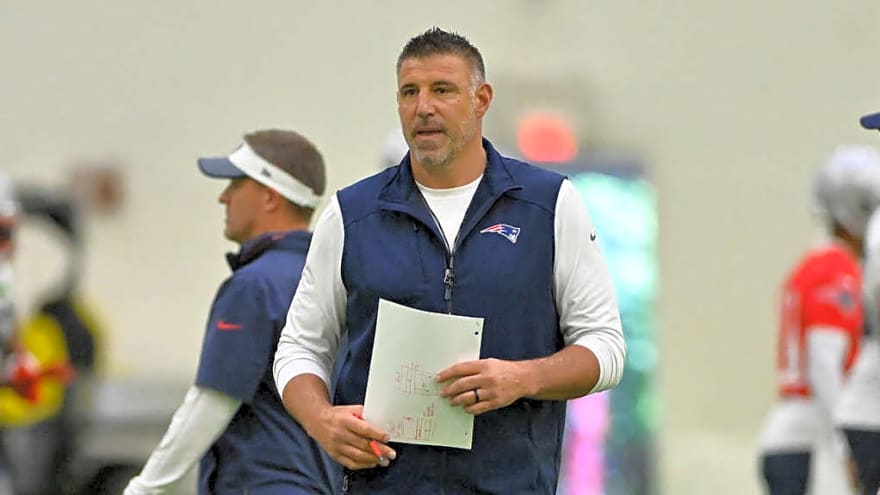
Patriots stars react to HC Mike Vrabel getting bloodied while breaking up camp fight
New England Patriots head coach Mike Vrabel likely won the respect of his team Wednesday. However, he may have needed a few stitches afterward. The Patriots hosted a joint practice with the Washington Commanders at Gillette Stadium in Foxborough, Massachusetts. New England rookie running back TreVeyon Henderson took a Commanders pass-rusher to the ground in pass protection, resulting in a scuffle. Vrabel then jumped in to help stop the fight. His face was bloodied after both teams calmed down. Patriots second-year quarterback Drake Maye loved that his coach was willing to step in. In a news conference after practice, the 22-year-old passer said that's the mentality the team needs. "That's what we're trying to build," he said. "The intensity, bringing it every day, taking no cr-p when we're out on the field. But also, it comes a time where, with our guys offensively, and getting over there and getting some tussles and kind of having some penalties, and extra after the whistle, can get us in trouble. But for mentality, I like it. I mean, I almost got in there, but I think maybe another day, maybe." His new coach doesn't want the QB to get in any brawls. The Patriots are banking on the third overall pick of the 2024 NFL Draft being the franchise's future. Plus, he doesn't need to worry about the Patriots' intensity with Vrabel in the building. New England wide receiver DeMario Douglas noted the former linebacker didn't seem rattled after breaking up the scrap. "I said, 'Coach, what's wrong with you?' And he said, 'You should have seen the other guy,'" Douglas told the media while smiling. "I just saw the scar on his face but didn't know what was happening." Vrabel likely sent two messages at Wednesday's practice. He won't tolerate an undisciplined team but also has his players' backs. That could go a long way for a Patriots squad aiming to improve after a 4-13 season.
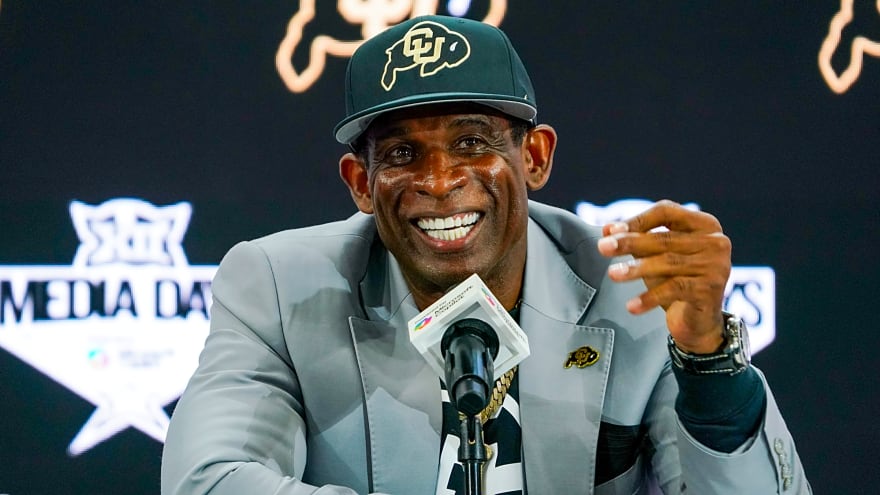
NFL Hall of Famer reveals why he chose to join Deion Sanders' Colorado coaching staff

Green Bay Packers: Slo-Mo Video of Jordan Love’s Insane 55-Yard TD Bomb to Romeo Doubs Goes Viral
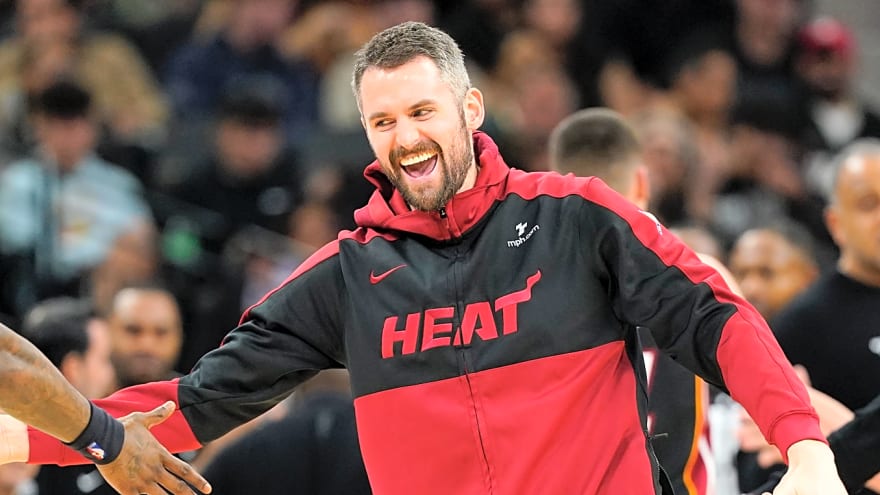
Kevin Love reportedly has preferred buyout destination
Kevin Love is eyeing a return to his roots. The five-time NBA All-Star big man Love has a preferred destination on the buyout market, Brett Siegel of ClutchPoints reported on Tuesday. Love would like to end up in Los Angeles. Now 36 years old, Love spent the last two-and-a-half seasons with the Miami Heat. He averaged just 5.3 points and 4.1 rebounds over 10.9 minutes per game in 2024-25 but still managed to shoot 35.8 percent from three on the year. Earlier this summer however, the Heat traded Love to the Utah Jazz as part of a three-team blockbuster deal. Now Love, a 17-year NBA veteran, is pursuing a contract buyout from the rebuilding Jazz. Though he is a native of Lake Oswego, Oregon, Love played his college ball in Los Angeles at UCLA. He also has ties to both L.A. teams — he won an NBA championship with Los Angeles Lakers star LeBron James on the Cleveland Cavaliers in 2016 and was also coached on that team by Tyronn Lue, who is now head coach of the L.A. Clippers. Both the Lakers and Clippers are currently sitting at 14 guaranteed contracts each. While they still have spots for two-way and Exhibit 10 players, that means the Lakers and Clippers are both down to their final open roster spot. The ex-rebounding leader Love still has some value, though probably more so as a jokester than as a contributing rotation piece. While Love clearly wants a homecoming to Los Angeles, he may have some convincing to do for either the Lakers or the Clippers to give him that final open roster spot.
Customize Your Newsletter
 +
+
Get the latest news and rumors, customized to your favorite sports and teams. Emailed daily. Always free!


